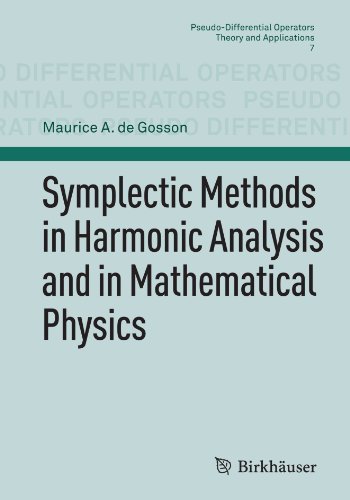

Most ebook files are in PDF format, so you can easily read them using various software such as Foxit Reader or directly on the Google Chrome browser.
Some ebook files are released by publishers in other formats such as .awz, .mobi, .epub, .fb2, etc. You may need to install specific software to read these formats on mobile/PC, such as Calibre.
Please read the tutorial at this link: https://ebookbell.com/faq
We offer FREE conversion to the popular formats you request; however, this may take some time. Therefore, right after payment, please email us, and we will try to provide the service as quickly as possible.
For some exceptional file formats or broken links (if any), please refrain from opening any disputes. Instead, email us first, and we will try to assist within a maximum of 6 hours.
EbookBell Team

4.1
100 reviewsThe aim of this book is to give a rigorous and complete treatment of various topics from harmonic analysis with a strong emphasis on symplectic invariance properties, which are often ignored or underestimated in the time-frequency literature. The topics that are addressed include (but are not limited to) the theory of the Wigner transform, the uncertainty principle (from the point of view of symplectic topology), Weyl calculus and its symplectic covariance, Shubin’s global theory of pseudo-differential operators, and Feichtinger’s theory of modulation spaces. Several applications to time-frequency analysis and quantum mechanics are given, many of them concurrent with ongoing research. For instance, a non-standard pseudo-differential calculus on phase space is introduced and studied, where the main role is played by “Bopp operators” (also called “Landau operators” in the literature). This calculus is closely related to both the Landau problem and to the deformation quantization theory of Flato and Sternheimer, of which it gives a simple pseudo-differential formulation where Feichtinger’s modulation spaces are key actors.
This book is primarily directed towards students or researchers in harmonic analysis (in the broad sense) and towards mathematical physicists working in quantum mechanics. It can also be read with profit by researchers in time-frequency analysis, providing a valuable complement to the existing literature on the topic. A certain familiarity with Fourier analysis (in the broad sense) and introductory functional analysis (e.g. the elementary theory of distributions) is assumed. Otherwise, the book is largely self-contained and includes an extensive list of references.